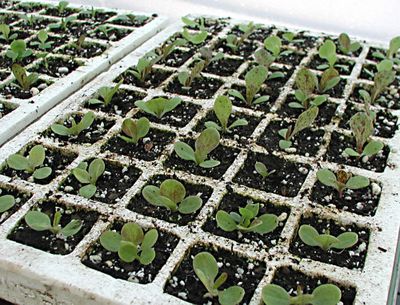Start seeds now, reap benefits later

Starting vegetable plants from seed indoors might sound like a hassle, but it’s something I do every year. I get a jump on the season and can try new varieties that aren’t available as seedlings in nurseries.
The Inland Northwest has about 120 frost-free days between mid-May and mid-September. Seed packets list the number of days it takes a plant to mature once it has been directly sowed in a garden, or transplanted out into the garden after being started indoors.
Packets contain other useful information, not the least of which is what growing season the seeds were packaged for. Some seeds aren’t viable for more than one year, so be sure to refer to the accompanying information box on the shelf-life of seeds before taking a chance on using leftover seeds from previous years.
Seed packets also list when to plant: as soon as the soil can be worked – usually in early April – or once the danger of frost has passed.
For example, let’s say you want to start your own tomatoes from seed. Most packets recommend sowing the seeds about eight weeks before the last frost, which is generally around May 15. Counting eight weeks back on the calendar gives you a starting date of March 20.
When buying seeds, another important decision is whether to buy open-pollinated, hybrid or heirloom varieties.
Open-pollinated varieties are those that have naturally cross-bred over several generations. They generally will produce offspring with similar traits to the parent plants.
Hybrids, which are often indicated with an F1 on the packets, are the result of crossing two open-pollinated parents. If you save seeds from these plants, it is highly unlikely they will have the same qualities of the parents.
Heirloom varieties help preserve genetic diversity in our seed sources, tend to be tried-and-true varieties with better flavor than our modern hybrids, and represent a piece of history.
For example, one of the heirlooms I’m growing this year is a European melon called Prescott Fond Blanc. This variety was grown in the mid-1800s and has many appealing qualities.
To start seeds indoors, you will need a bag of sterile germination mix which is lightweight and holds moisture. Don’t use garden soil as it is too heavy and might contain weed seeds or disease.
The germination mix should be lightly moistened and placed into a seed-starting flat or a half-gallon milk carton cut in half lengthwise. Plant the seeds at the depth indicated on the packet and mark the rows with the variety name.
To prevent damping-off – a fungus that can cause a flat of seedlings to topple over and die – sprinkle a thin layer of milled sphagnum moss over the soil surface. This can be found at garden centers.
Cover the container with a clear plastic lid or plastic sheeting to keep the humidity relatively constant. If you are growing seeds that need a warmer temperature to germinate – like tomatoes, peppers, eggplant and basil – consider purchasing a seedling heat mat. They cost about $30 and are placed underneath seed-starting containers.
Most seeds do not require light in order to germinate, but once they sprout, the containers need to be moved underneath a grow light or onto a sunny windowsill.
Keep grow lights about two inches above the seedlings as they grow. Remove the plastic cover if it impedes the seedlings’ growth or keeps the soil too moist, but monitor the soil moisture frequently.
Follow the packet directions for the correct timing on transplanting the seedlings into the garden.